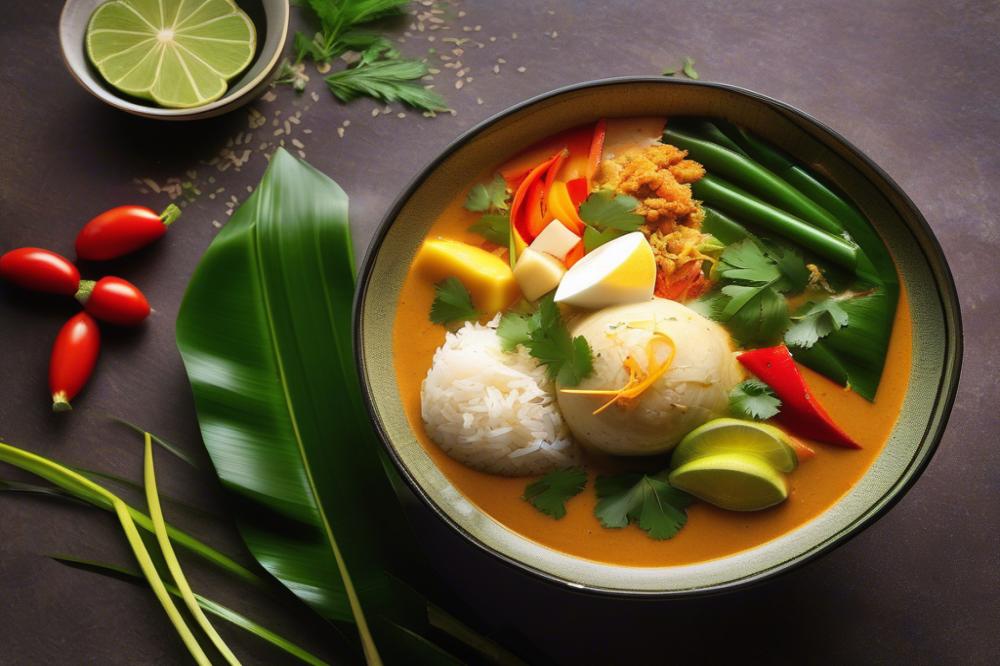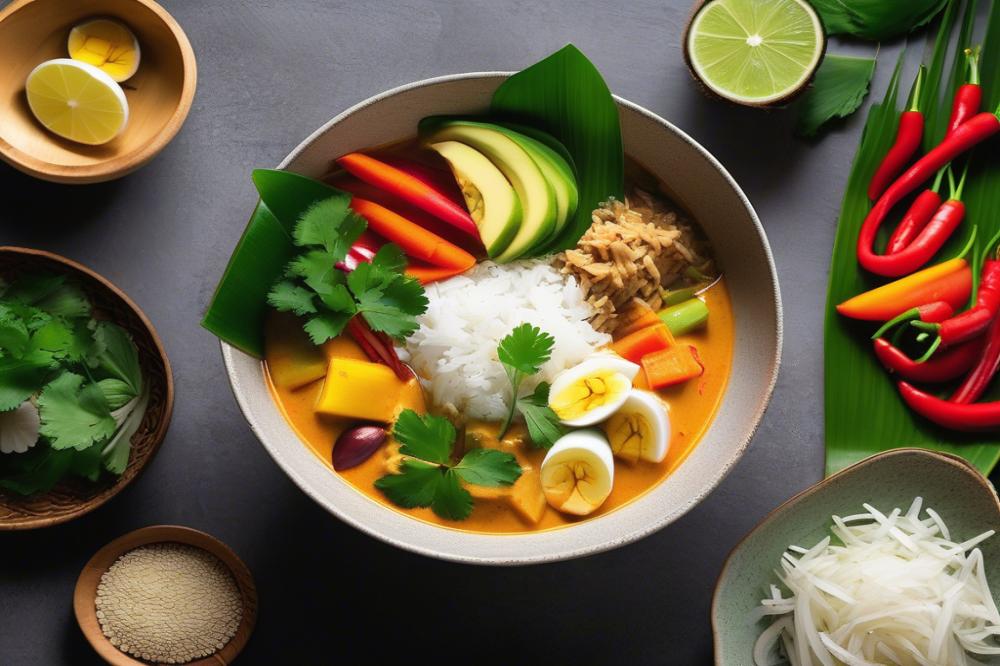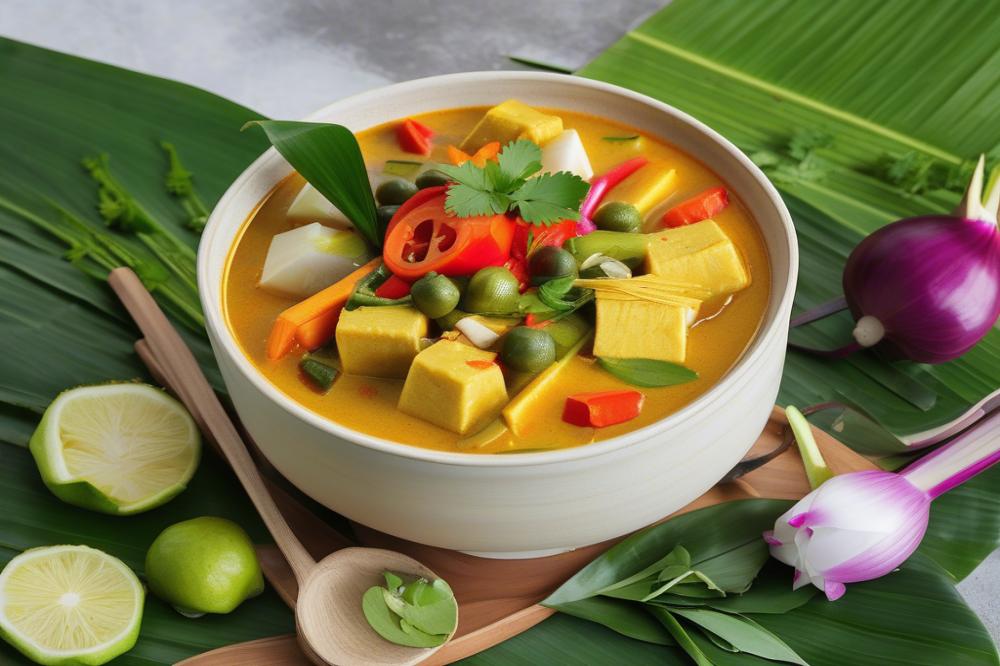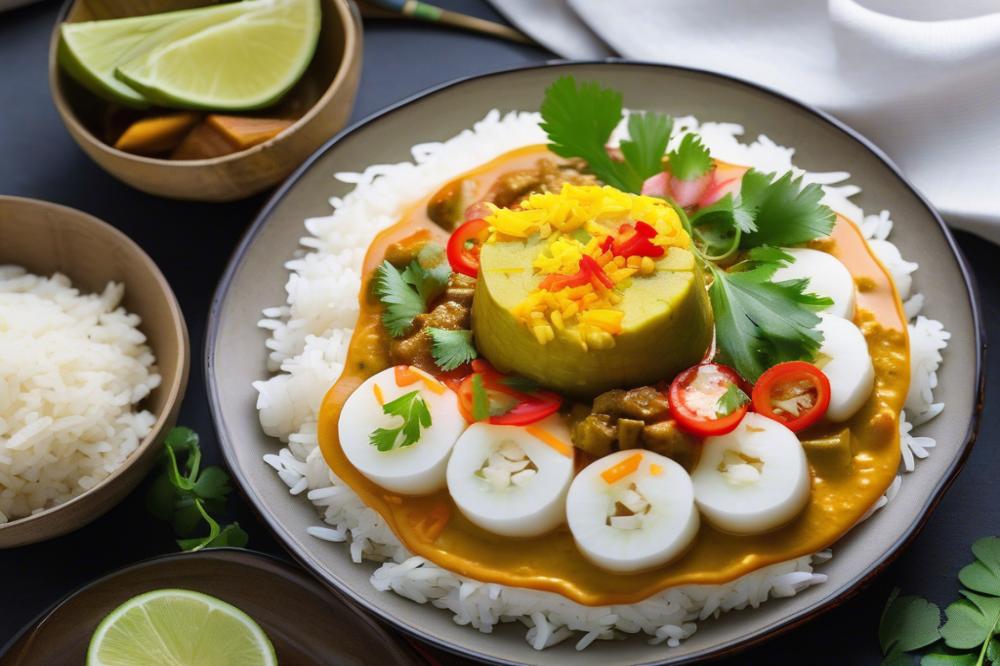Introduction
Lontong serves as a quintessential dish in Malaysian cuisine. This delightful meal combines a rich Coconut Curry with a thick rice cake, creating a satisfying vegetable dish that many adore. Celebrated for its comforting flavors, this dish holds a special place in cultural traditions across Malaysia. Families often share Lontong during festive occasions, highlighting its importance in communal gatherings and celebrations.
The origins of this beloved dish can be traced back to the rich tapestry of Southeast Asian food culture. Many variations exist, influenced by local ingredients and cooking styles. Some regions may prepare it with different spices, while others could include unique vegetables. This diversity showcases how culinary practices evolve over time, yet many remain rooted in traditional recipes.
This plant-based meal is a healthy cooking option, especially appealing to those who enjoy spicy dishes. The harmony between the creamy texture of coconut milk and the spiciness of the curry creates a dynamic flavor profile. For many, indulging in Lontong is not just eating; it’s a celebration of heritage and shared experiences derived from generations of cooking.
Lontong: A Delicious Malaysian Coconut Curry vegetable dish

Lontong is a traditional dish from Malaysian cuisine that showcases a delightful mix of flavors and textures. This popular vegetable dish highlights the use of rice cakes, also known as ‘lontong’, which are made from glutinous rice. These rice cakes are usually encased in banana leaves and steamed to create a firm yet chewy texture. This unique preparation allows the rice to absorb the flavors of the accompanying curry.
The star of this dish is undoubtedly the rich coconut milk. It forms the base of the curry recipe, lending a creamy, tropical essence that coats the vegetables. Often, various vegetables are included, such as carrots, green beans, and cabbage, creating a colorful medley that is as visually appealing as it is delicious. Spices play a vital role in bringing out the flavors, with chilies adding a touch of heat that makes this a favorite for those who enjoy spicy dishes.
This plant-based meal is perfect for anyone looking to explore healthy cooking options. The combination of rice cake and vegetable curry not only provides sustenance but also a burst of nutrients. Each bite is a celebration of Southeast Asian food culture, showcasing the balance between taste and health.
The preparation of lontong can vary from one household to another. Some families add hard-boiled eggs or tofu for extra protein, while others might enhance the curry with fresh herbs like coriander for added freshness. These variations speak to the dish’s versatility. Whether enjoyed on a special occasion or as a comforting daily meal, it remains a staple in many homes.
Ingredients and Cooking Instructions

Ingredients List
- 2 cups of rice (for rice cake)
- 1 can (400 ml) of coconut milk
- 2 cups mixed vegetables (carrots, cucumber, long beans)
- 1 onion, chopped
- 2 cloves garlic, minced
- 1 tablespoon curry powder
- 1 teaspoon turmeric powder
- 2 tablespoons oil for frying
- Salt to taste
- Fresh herbs (such as cilantro) for garnish
Cooking Instructions
Begin by preparing the rice cakes. Rinse the rice under cold water until the water runs clear. This helps with the texture. After rinsing, soak the rice in water for about 2 hours. Drain and place it in a steamer lined with cheesecloth. Steam the rice for about 30 minutes until fully cooked. Once done, remove it from the steamer and allow it to cool. After cooling, cut the rice cake into square pieces.
Next, you will move on to the vegetable curry. Heat oil in a pan over medium heat. Sauté the chopped onion until it becomes slightly transparent. Then, add the minced garlic, cooking for another minute until fragrant. Sprinkle in the curry powder and turmeric powder for a vibrant flavor. Stir frequently to awaken the spices.
Now, it’s time to add the mixed vegetables. Carrots, cucumber, and long beans create a colorful medley. Pour in the coconut milk, bringing the ingredients to a gentle simmer. This mixture will develop a rich and creamy consistency. Season with salt to taste. Let it cook for about 10 minutes until the vegetables are tender but still hold their shape.
Combine the rice cakes with the curry after both components are ready. Serve the curry over the rice cake pieces for an appealing presentation. Garnish with fresh herbs like cilantro. This Malaysian cuisine dish offers a delightful balance of flavors. Enjoy this plant-based meal as part of your healthy cooking recipes. It represents a true taste of Southeast Asian food.
Nutritional Information

Understanding the nutritional breakdown of each ingredient in this wonderful dish is important for anyone interested in healthy cooking. Commonly used vegetables include carrots, green beans, and cabbage. Carrots are rich in beta-carotene, which the body converts to vitamin A. Green beans provide dietary fiber, promoting digestion and heart health. Cabbage offers antioxidants and is low in calories, making it an ideal addition to any diet. The rice cake made from glutinous rice is a good source of carbohydrates, providing the necessary energy to fuel daytime activities. Coconut milk, a key ingredient in many recipes, contains healthy fats. These provide energy and help in the absorption of vitamins.
Health Benefits of a Plant-Based Meal
This dish stands out as a fantastic plant-based meal, promoting a diet rich in fruits and vegetables. Embracing the principles of Malaysian cuisine means enjoying flavors while also supporting health goals. Various vegetables used contribute significantly to daily vitamin and mineral intake. Consuming more plant-based options can aid in weight management, lower the risk of chronic diseases, and foster improved digestive health.
Importance of Spices and Vegetables in a Healthy Diet
Not only do spices add flavor to spicy dishes, but they also bring numerous health benefits. Ingredients like turmeric and cumin, often featured in a curry recipe, contain anti-inflammatory properties. These spices can strengthen the immune system and combat infections. Vegetables enhance any meal’s nutritional profile and provide different tastes and textures. Traditional recipes often highlight the significance of using fresh produce. The overall combination serves to support both physical health and enjoyment of food.
Final Thoughts on Lontong and Its Place in Cooking
Recapping the significance of this beloved dish reveals its deep roots in Malaysian cuisine. Families often prepare it for celebrations, showcasing vibrant flavors and the warmth of togetherness. The combination of coconut milk with spices creates a rich and satisfying experience that resonates with many.
Trying to make this vegetable dish at home can be a delightful adventure. Experimenting with fresh ingredients and spices can lead to a mouthwatering result. Crafting this recipe can also be a bonding experience with friends or family. Sharing food preparations often brings people closer together, creating lasting memories.
Traditional recipes hold a special value in today’s culinary world. They connect us to our heritage and remind us of the importance of cultural identity. By making classic dishes, we revitalize timeless practices and introduce them to a new generation. The act of cooking can be a celebration of history, flavor, and shared moments. Embrace the challenge of creating something special, and you might surprise yourself with the outcome. Enjoy the journey of exploring unique recipes and flavors that enrich your cooking repertoire.



